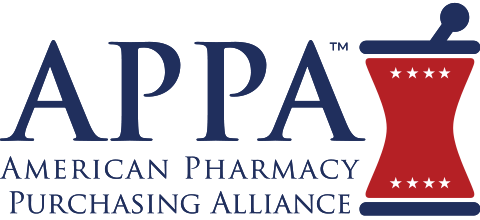U.S. pharmacists received a startling reminder of the urgent need for drug safety, when in November 2019, a statement was issued by the Drug Enforcement Agency (DEA) warning the public about an alarming number of counterfeit pills that had been seized throughout the nation. “Mexican drug cartels are manufacturing mass quantities of counterfeit prescription pills containing fentanyl, a dangerous synthetic opioid that is lethal in minute doses, for distribution throughout North America,” the statement read.
The DEA said that 27 percent of the drugs seized contained potentially lethal doses of fentanyl. Special Agent in Charge Ray Donovan, of the agency’s New York Division warned: “Counterfeit pills have hidden dangers causing one in four users to die, according to DEA field testing. This is a warning and a plea for parents to talk to their children about using counterfeit or diverted prescription pills – either one of them ends with death and/or devastation.”
News of the surge in potentially-lethal drugs comes as U.S. drug manufacturers, wholesale distributors, pharmacies and other parties involved in prescription drug distribution continue to implement key provisions of the 2013 Drug Quality and Security Act, which is intended to prevent counterfeit, stolen, contaminated or otherwise harmful drugs from entering the nation’s drug supply chain.
Drug Supply Chain Security Act – Working Toward a Track-and-Trace System
Specifically, Title II of that legislation, the Drug Supply Chain Security Act (DSCSA) mandates creation of “an electronic, interoperable system to identify and trace certain prescription drugs as they are distributed in the United States.” The system, referred to as “track and trace,” is being spearheaded by the U.S. Food and Drug Administration (FDA), and is mandated to be operational by 2023. When fully implemented, the system will be capable of tracking a drug at the unit level throughout its supply chain.
The FDA is working to build that system, namely by working with supply chain stakeholders, and through a pilot program that was launched earlier this year to identify, build, and test required capabilities.
DSCSA Implemented in Phases
As that work continues, progress is being made to implement other provisions of the law.
A. Product Tracing
In 2015, manufacturers, wholesale drug distributors, repackagers and dispensers (primarily pharmacies) were required to provide information about the handling history of each drug sold in the U.S. market. Specifically, each drug transaction must now be accompanied by three separate documents that include FDA-required information including:
Transaction information (TI)
-
-
-
- Proprietary or established name of the product
- Strength and dosage form of the product
- NDC number of the product
- Container size
- Number of containers
- Lot number of the product
- Date of the transaction
- Date of the shipment, if more than 24 hours after the date of the transaction
- Business name and address of the person from whom and to whom ownership is being transferred.
-
-
Transaction history (TH)
A statement in paper or electronic form, including the transaction information for each prior transaction going back to the manufacturer of the product.
Transaction statement (TS)
A statement, in paper or electronic form that affirms the following points:
-
-
-
- The entity transferring ownership in a transaction is authorized as required by DSCSA;
- The product was received from a person who is authorized as required by DSCSA;
- Transaction information and a transaction statement were received from the prior owner of the product, as required under the law;
- The entity did not knowingly ship a suspect or illegitimate product;
- The entity has system and processes in place to comply with verification requirements under the law; and
- The entity did not knowingly provide false information, and did not knowingly alter the transaction history.
-
-
B. Product Verification
Also beginning in 2015, stakeholders are required to have in place systems and processes to comply with product verification requirements. Specifically, this includes the ability to handle “suspect” and “Illegitimate products” that may be counterfeit, diverted, stolen, intentionally adulterated or appear otherwise unfit for distribution.
Stakeholders must have in place a process to:
-
- Respond to verification requests from the FDA about suspected products;
- Quarantine and investigate any suspect product to determine if it is illegitimate;
- Notify trading partners and the FDA of any illegitimate product;
- Respond to notifications of illegitimate product; and
- Satisfy recordkeeping requirements.
C. Product Identification (Serialization)
The law established requirements for manufacturers and repackagers to print or affix a unique product identifier on the smallest individual sellable unit. The product identifier is composed of four specific data elements:
-
- National Drug Code
- Serial number
- Lot number
- Expiration date.
The product identifier must be “human and machine readable,” with a two-dimensional (2-D) bar code adopted as the standard for machine processing.
The law sets out specific deadlines for compliance within each stakeholder group:
-
- November 2017: Manufacturers
- November 2018: Repackagers
- November 2019: Wholesalers will only trade products with product identifiers
- November 2020: Dispensers (Pharmacies) will only trade products with product identifiers.
2019: Pharmacy Specific Requirements
Pew Charitable Trusts refers to pharmacies as “the last stop in the distribution supply chain before medicines reach patients,” and calls their participation “an essential component of the new DSCSA system. It’s not surprising then, that several of the important components already implemented, directly affect pharmacies. Current pharmacy responsibilities include:
1. Confirm all trading partners are properly licensed or registered.
a. Check the registration of manufacturers and repackagers by accessing the FDA’s Drug Establishments Current Registration Site — DECRS.
b. Check the licensing of wholesale distributors and third-party logistics providers. This can be done by searching the FDA’s Wholesale Distributor and Third-Party Logistics Providers Reporting database.
c. Check the licensing of pharmacies through the respective state authority.
2. Receive, store and provide product tracing documentation.
a. Only accept prescription drugs that are accompanied by three pieces of product tracing documentation:
i. Transaction Information
ii. Transaction History
iii. Transaction Statement.
b. Store the product tracing documentation in paper or electronic format for six years.
c. Generate and provide all product tracing documentation whenever a prescription drug is sold to a trading partner. (This documentation does not need to be provided when a prescription is dispensed to a patient, or sold to another pharmacy for dispensing to a patient.)
3. Investigate and properly handle suspect and illegitimate drugs.
a. Quarantine and investigate suspect prescription drugs to determine if they are illegitimate.
b. If a drug is found to be illegitimate, a pharmacy must work with the manufacturer and take specific steps to avoid inadvertent dispensing to patients. The pharmacy must also notify the FDA and the trading partner from whom the drug was purchased, and to which it may have been sold.
Looking ahead, pharmacies will face additional responsibilities that include:
-
- 2020: Pharmacies will only be permitted to purchase products that include a unique product identifier.
- 2023: The entire drug supply chain – including pharmacies – will be required to utilize the electronic track-and-trace system.
Protecting Drug Safety – the Role of Technology
As the “final link” in the drug supply chain, pharmacists have a tremendous role in the successful implementation of the DSCSA. By the time a drug is received by a pharmacy, it has already passed through several other trade partners, and is just one step away from being dispensed to a patient.
Therefore, pharmacies must have a fail-safe process in place to ensure — not only full compliance with DSCSA – but accuracy and safety of its overall operations. In today’s busy pharmacies, that process increasingly comes in the form of a fully-integrated technology system. Certain technology solutions, including the PrimeRx™ system offered by Micro Merchant Systems, can allow a pharmacy to seamlessly manage compliance requirements, monitor patient wellbeing, protect against expired drugs, and seamlessly maintain records and documentation.
Important to note though, not every technology system offers the same capabilities. This means a pharmacy manager must spend time carefully reviewing different systems, to ensure a system has the required functionality. With regard to compliance with the Drug Supply Chain Security Act, for example, it’s important to ensure that a system’s manufacturer is aware of the evolving requirements, and understands the need to provide required capabilities. With regard to PrimeRx™, DSCSA and safety-related competencies include:
Access to National Drug Code and other databases. Pharmacies have long recognized the need for immediate access to the National Drug Code listing as a way to verify prescribed medications and list proper drug codes on all documentation. Going forward, the NDC code will be an integral part of each drug’s unique identifier, which means access to the NDC registry will be essential. In addition, pharmacies must have access to the required FDA databases to validate trading partners’ proper licensing and certification. PrimeRx™ offers seamless access to this information, and allows pharmacy staff to quickly confirm and document all required information.
Recordkeeping. The PrimeRx™ system offers extensive recordkeeping that allows pharmacy managers to efficiently store documentation and information about essentially all aspects of pharmacy operations. This includes the ability to record unique notes and observations about patient interactions, along with extensive medication histories. The system also allows for detailed inventory-related records management, including chains of custody for all drugs, expiration dates, and dispensing histories. With regard to DSCSA compliance, the system can seamlessly process and store mandated transaction documents. Should those documents need to be transmitted to another pharmacy, the system can automatically send the required materials.
Report generation. In addition to storing this information, PrimeRx™ allows the pharmacy manager to generate detailed reports on a wide range of patient, inventory and operations topics. This includes reports to satisfy FDA information requests regarding specific transactions, or drug investigations. Should a pharmacy determine that a drug is illegitimate, PrimeRx™ can facilitate compliance with all FDA reporting requirements.
Bar Code Scanning. Since the DSCSA requires all product identifiers to be available in 2-D format, it’s essential for a pharmacy technology system to be able to easily import that information. PrimeRx™ offers the required scanning capability, and allows for information to be quickly and accurately loaded and filed.
Continuous Upgrades. Micro Merchant Systems is a leader in the pharmacy technology industry, and has long been a pioneer in anticipating pharmacy needs. As the FDA continues its work to identify core components of the national track-and-trace system, Micro Merchant Systems will again be at the forefront with required capabilities. As such, PrimeRx™ customers can be assured that as the system is developed, the necessary software upgrades will be provided in a timely, efficient manner.
Counterfeit and contaminated drugs pose a legitimate threat to the global drug supply chain. The World Health Organization reports one in 10 drugs sold in developing countries is fake or substandard, “leading to tens of thousands of deaths, many of them of African children given ineffective treatments for pneumonia and malaria.”
And while developing countries may bear the brunt of the counterfeit drug problem, no country is immune. In a single week, officials from Health Canada seized $2.5 million worth of fake pharmaceuticals at the border. Earlier this year the WHO reported on fake leukemia medicine circulating across Europe. And in the United States, which has the safest drug supply in the world, as many as 19 million Americans buy medicines from foreign online pharmacies or other unlicensed sources.
Clearly, the DSCSA comes at a good time for the U.S. prescription drug industry – and American consumers. And armed with a fully-integrated technology system, the nation’s pharmacies will continue to be at the forefront of efforts to protect patients from harmful prescription drugs.

